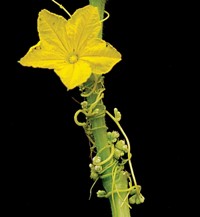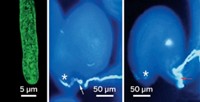Advertisement
Grab your lab coat. Let's get started
Welcome!
Welcome!
Create an account below to get 6 C&EN articles per month, receive newsletters and more - all free.
It seems this is your first time logging in online. Please enter the following information to continue.
As an ACS member you automatically get access to this site. All we need is few more details to create your reading experience.
Not you? Sign in with a different account.
Not you? Sign in with a different account.
ERROR 1
ERROR 1
ERROR 2
ERROR 2
ERROR 2
ERROR 2
ERROR 2
Password and Confirm password must match.
If you have an ACS member number, please enter it here so we can link this account to your membership. (optional)
ERROR 2
ACS values your privacy. By submitting your information, you are gaining access to C&EN and subscribing to our weekly newsletter. We use the information you provide to make your reading experience better, and we will never sell your data to third party members.
Biological Chemistry
Plant Sex Requires D-Serine
D-Serine signaling helps guide pollen tube cells to their ovule objective
by Sarah Everts
March 21, 2011
| A version of this story appeared in
Volume 89, Issue 12
After pollen lands on a flower, its sperm don’t have the ability to swim to a plant’s ovules. So fertilization instead requires the pollen cells to grow as long as 12 inches so the sperm can reach their ovule target. Now, researchers led by José A. Feijó, a plant scientist at the University of Lisbon, in Portugal, report that D-Serine is involved in the signaling pathways that direct the pollen tube cells to their objective (Science, DOI: 10.1126/science.1201101). D-Serine regulates a calcium ion channel that is found in high density in the pollen tube cell. It is essential for the pollen tube cell’s rapid growth, which delivers the sperm to the ovules located at the bottom of a plant’s pistil. “D-Serine is a novel signaling mechanism in plants,” comments Jose Gutierrez-Marcos, a plant researcher at the University of Warwick, in England. “What is quite exciting is that this D-Serine signaling is quite similar to what is observed in animal neurons,” he adds, where D-Serine also activates ion channels.





Join the conversation
Contact the reporter
Submit a Letter to the Editor for publication
Engage with us on Twitter